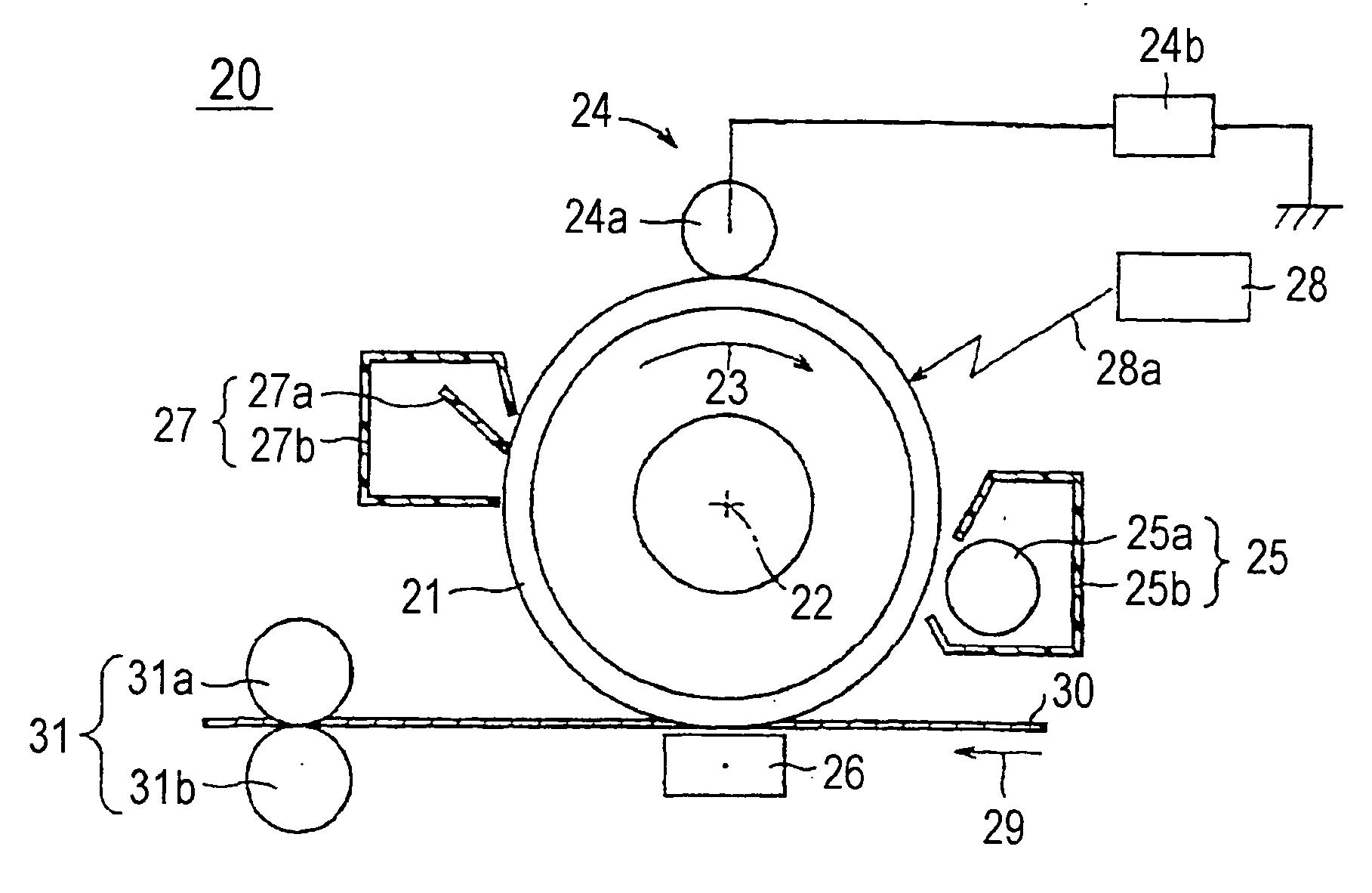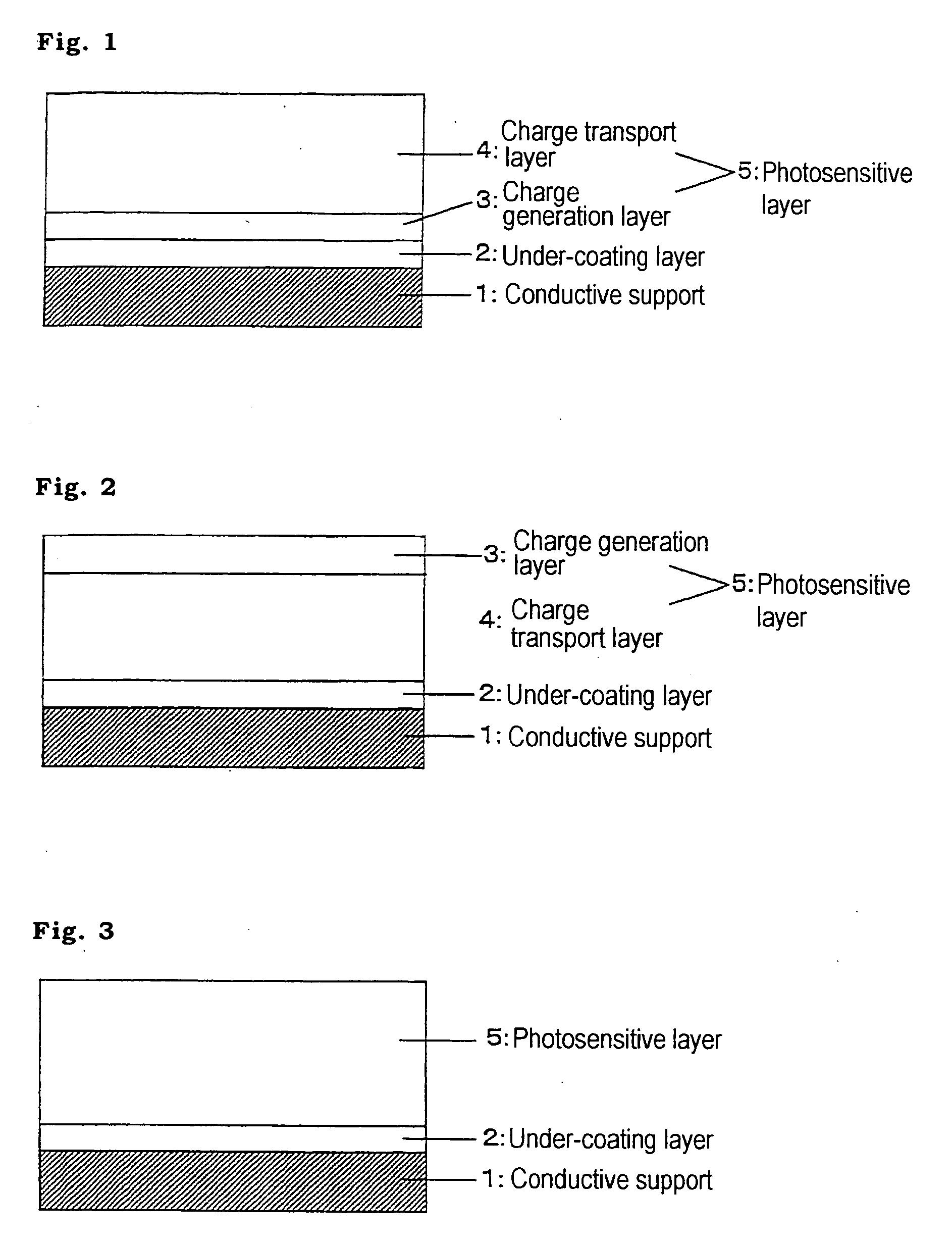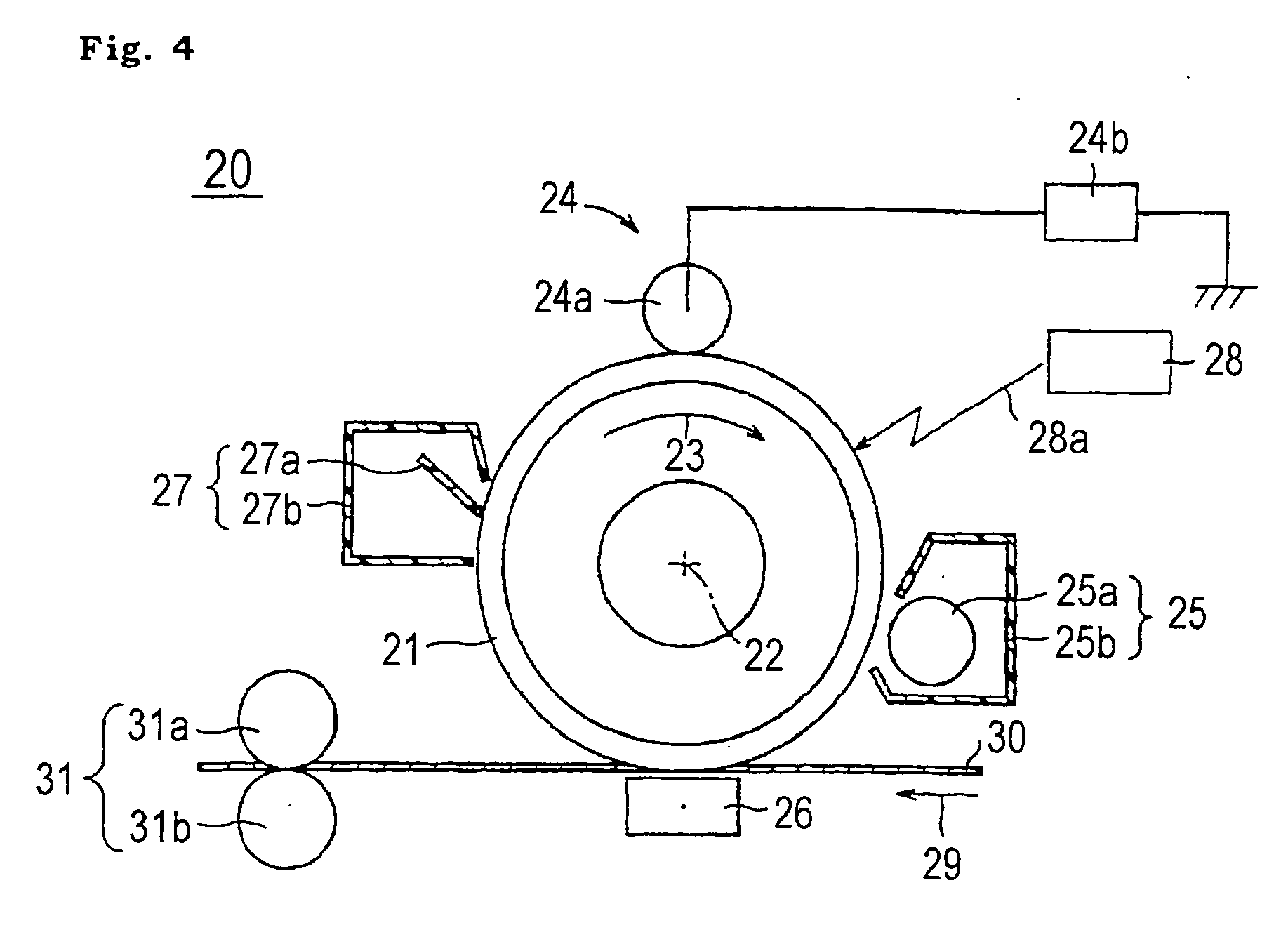Electrophotographic photoreceptor and image forming apparatus
- Summary
- Abstract
- Description
- Claims
- Application Information
AI Technical Summary
Benefits of technology
Problems solved by technology
Method used
Image
Examples
preparation example 1
Preparation of Compound 1
[0154]1.7 g (1.0 equivalent) of a diamine compound represented by the following structural formula (4):
2.1 g (2.01 equivalent) of diphenylacetoaldehyde represented by the following structural formula (5):
0.023 g (0.01 equivalent) of DL-10-camphorsulfonic acid were added to 50 mL of toluene contained in a reactor vessel provided with a Dean-Stark. A mixture was heated while being refluxed so that the toluene and water, which cause azeotropy, are eliminated, and was allowed to react for six hours. After the reaction, the reacted mixture was condensed to approximately one tenth ( 1 / 10) in volume, and was gradually dropped into 100 mL of hexane while the reacted mixture was vigorously stirred. A crystal formed in a mixture was filtered and washed with cold ethanol. Then, the washed crystal was recrystallized with use of a mixed solvent of ethanol and ethyl acetate, and 3.47 g (88% of yield) of a white powdered compound was obtained.
[0155]The white powdered compo...
preparation examples 2 to 4
Preparations of Compounds 2, 9 and 16
[0170]Compounds 2, 9 and 16 were prepared in the same manner as Compound 1, but material compounds shown in Table 2 below were used as amine and carbonyl compounds.
[0171]It is to be noted that material compounds of Compound 1 are also shown in Table 2.
[0172]Further, analysis values obtained in Preparation Examples 1 to 4 are also shown in Table 2.
TABLE 2
example 1
[0173]A photoreceptor was prepared, that has a charge transport layer comprising Compound 1 prepared in Preparation Example 1; Compound 1 is the enamine compound of the present invention.
[0174]As a conductive substrate, a polyethylene terephthalate (abbreviated to PET) film with a thickness of 100 μm is used, that was vapor-deposited with aluminum on its surface. (The above-mentioned film will be hereinafter referred to as “aluminum vapor-deposited PET film”.)
[0175]7 parts by weight of titanium oxide (trade name: Tipaque TTO55A; manufactured by Ishihara Sangyo Kaisha, Ltd.) and 13 parts by weight of a copolymerized nylon resin (trade name: Amilan CM8000; manufactured by Toray Industries, Inc.) were added to a mixed solvent of 159 parts by weight of methyl alcohol and 106 parts by weight of 1,3-dioxolan, and a mixture was subjected to a dispersion treatment for eight hours with use of a paint shaker in order to prepare 100 g of a coating solution for preparing an under-coating layer....
PUM
 Login to View More
Login to View More Abstract
Description
Claims
Application Information
 Login to View More
Login to View More - R&D
- Intellectual Property
- Life Sciences
- Materials
- Tech Scout
- Unparalleled Data Quality
- Higher Quality Content
- 60% Fewer Hallucinations
Browse by: Latest US Patents, China's latest patents, Technical Efficacy Thesaurus, Application Domain, Technology Topic, Popular Technical Reports.
© 2025 PatSnap. All rights reserved.Legal|Privacy policy|Modern Slavery Act Transparency Statement|Sitemap|About US| Contact US: help@patsnap.com



